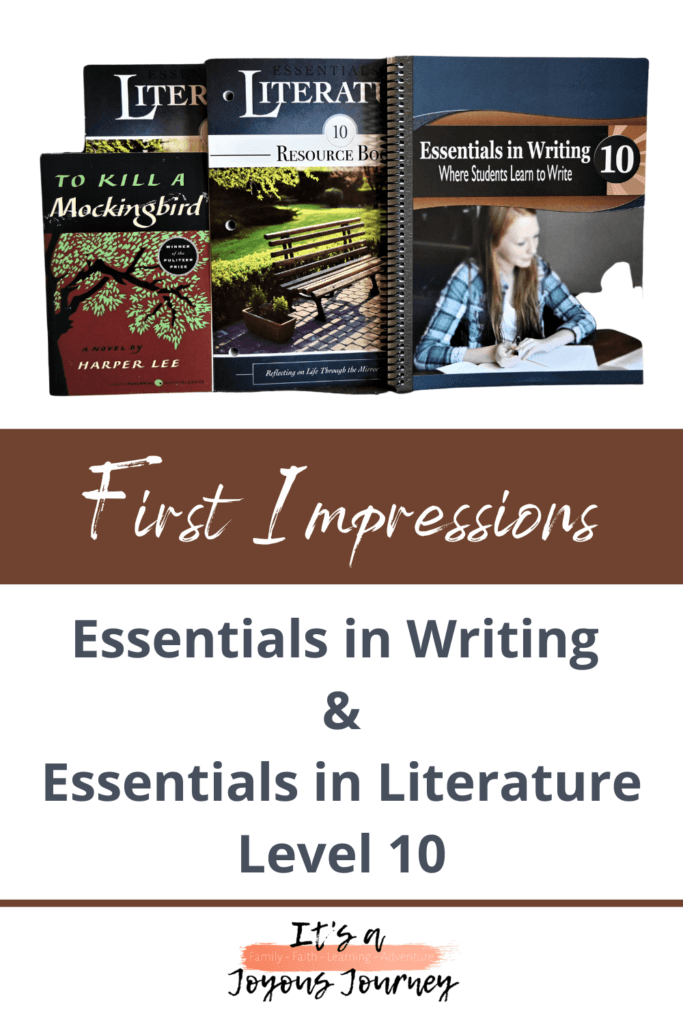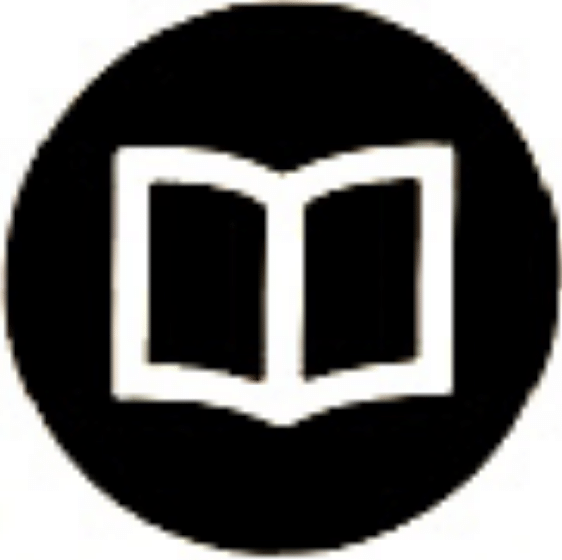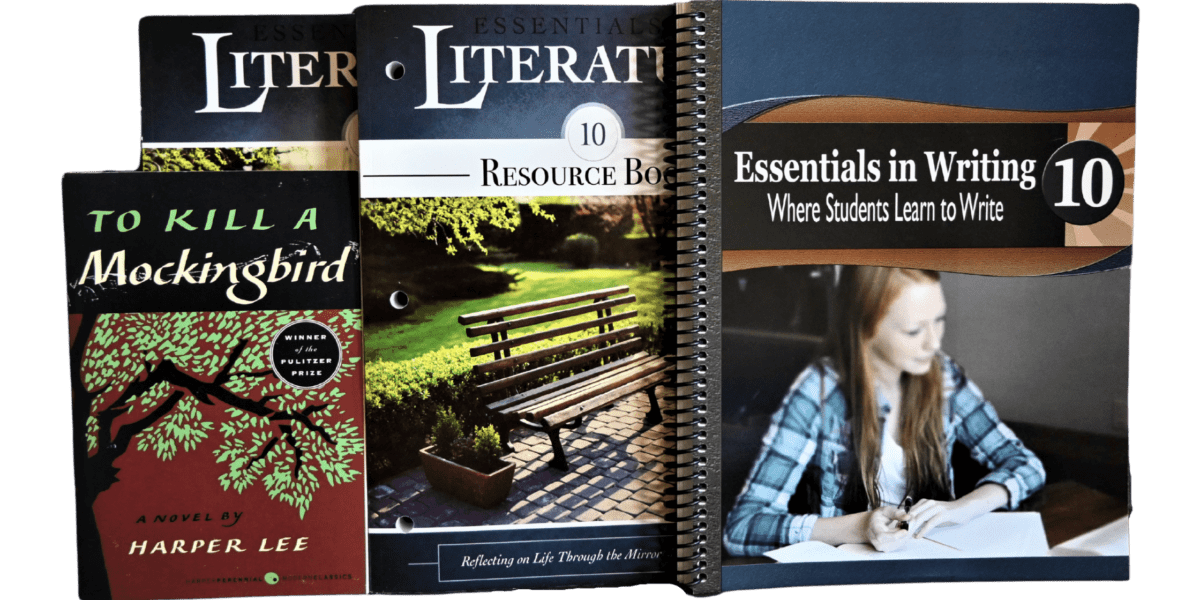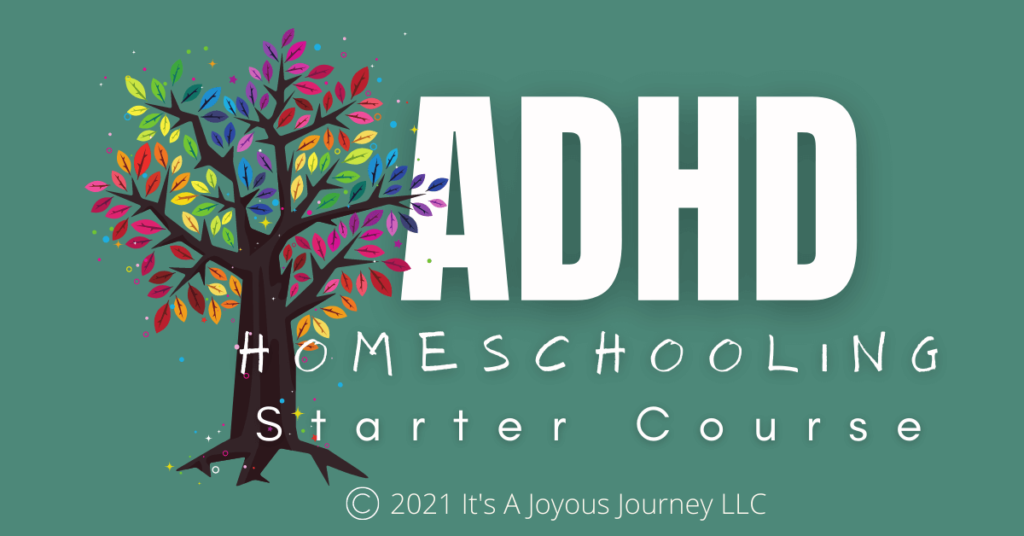Essentials in Writing and Essentials in Literature Level 10 are our homeschool curriculum choices for this year! Find out why we chose them, how they work in our daily homeschool schedule, and what each one looks like in action!
It’s A Joyous Journey LLC was compensated for writing this review. All opinions are honest and based on our own experiences and/or research of the brand we are promoting. Links within this post may contain affiliate links for which we would earn commission, at no additional cost to you, should you choose to purchase products through our links. We take no responsibility for content on any external links. Please see our Disclosure Policy for more information.
Pin for later…


Why We Chose Essentials in Writing & Essentials in Literature Level 10
In searching for a high school English curriculum this year, we were looking for something that could be used by both our senior and our freshman. You may be wondering how that would be possible with them being on two different levels, but it’s really ideal for us to collaborate on English. Reading and discussing books together and collaborating on the writing process through brainstorming and peer review add depth to the process for homeschool high school students.
Essentials in Writing
We were really excited to find Essentials in Writing and Essentials in Literature! Essentials in Writing Level 10 covers all of the writing basics that any high school English curriculum should include:
- Sentence Structure
- Paragraph Structure
- Essays
- Research Papers
It looked like it would be just the right fit to solidify the essentials for my senior, who has some learning challenges that make writing a little more difficult and to reinforce proper sentence and paragraph structure for my freshman.
Essentials in Literature
We chose Essentials in Literature Level 10 based mostly on the included novel, To Kill A Mockingbird. Levels 9, 10, and 11 are available, as of this writing. Level 9 uses The Hobbit, which we’ve already studied. Level 11 uses The Great Gatsby, which we felt would be a little much for our freshman daughter. To Kill A Mockingbird is a good novel that we wanted both students to read before graduating from high school.

How We Use Essentials in Writing & Essentials in Literature Level 10 in Our Daily Schedule
Essentials in Writing and Essentials in Literature can be used together to earn a full-year high school English credit. In the front of the Essentials in Writing book, there is an optional 34-week plan that schedules out the writing and literature to be done simultaneously. This plan can also be downloaded directly into Homeschool Planet and adjusted to meet your needs.
After we finished the first story unit in the literature book, we decided to tweak that schedule a bit for our purposes. Because my kids had a hard time remembering the details of the story by the time we got to the independent practice, we are going to do each literature unit (one complete story and all of its components) in full without breaking it up for writing from now on.
Then, we’ll do a week or so of writing, depending on the particular writing project we are working on at that point. We’ll let you know how this type of schedule works out for us in our mid-year update on Essentials in Writing and Essentials in Literature.
Using Essentials in Writing Level 10: What It Looks Like For Us
Video Content
The video content is the backbone of Essentials in Writing, and you can choose either DVD or online streaming. For each lesson, your student will first view a short video covering one concept. Mr. Stephens, who teaches the course, does a great job of presenting the lessons using step-by-step examples that are easy to understand!
After the video, it’s time to move over the workbook which includes a written explanation of the concept, along with examples. My kids really like having this page to reference when they do the assignments.
Assignments
Speaking of assignments…so far, there are usually two days of practice for each concept. We are still early in the school year, so we have just finished the sentence structure unit. The assignments in that unit asked students to do things like write sentences that show a particular concept (i.e. compound sentences), look up examples of certain types of sentences online or in books, and write paragraphs that include certain sentence types.
Personalizing the Curriculum
As you might know, I’m a big proponent of individualized education. That means that I work hard to make sure my students are learning in a way that will help them be most successful. When I realized that these assignments were often taking my kids much longer than I expected them to, I started investigating.
I found out that they were getting bogged down in coming up with content and weren’t focusing on the concept they were supposed to be learning. I wanted to make sure they mastered the concepts, so I remedied this by just creating some sentences and paragraphs for them to correct. It was really helpful, and we all felt better about their mastery of the concepts.
Looking forward to the other units, there are some great graphic organizers that I think are going to be really helpful in organizing content for paragraphs and essays!
I’ll talk a little more about grading in my mid-year update, but you might be interested to know that Essentials in Writing offers a scoring service for an additional fee. We’re not using it right now, but I’ve heard others in the Facebook group for parents talk about how helpful it is for them!
Using Essentials in Literature Level 10: What It Looks Like For Us
Format
Essentials in Literature Level 10 is set up with a consistent format that follows the same basic flow for each story, but the content is modified to focus on new literature analysis elements each time. The format looks like this:
- Day 1: Before You Read-Story Introduction and Meet the Author

- Day 2: Before You Read-Analyzing Literature, Reading Focus (usually with a worksheet from the resource book), and Vocabulary; Read the story (The lessons don’t state that it’s time to read the story. It may take more than one day to do this, depending on the length of the story)

- Day 3: After You Read-Check Comprehension, Main Idea Discussion, Think Critically, Analyzing Literature (usually with a worksheet from the resource book), and Dive Deeper

- Day 4: After You Read-Analyzing Literature, Connection Reflection, and Writing Connection

- Day 5: After You Read-Nonfiction Connection, Extended Activities, and Independent Practice

When you get to the novel, this format will change, since it will take a lot longer than five days to read and analyze the book. This is a good indication of what you will see throughout most of the course, though.
I’m sure you noticed the
Discussion
There are a lot of really great topics for discussion that are introduced in the lessons! We have found ourselves engaging in conversation to an extent that I feel has adequately covered the questions, so I haven’t required too many written responses so far.
Of course, if your student does better writing out their answers, that is okay, too! Do it however it works best for your family!
Scoring
There is an answer key in the back of the Resource Book. Just make sure, as you’re evaluating responses, to keep in mind that answers to literary analysis questions are most often subjective. For this reason, much of the answer key includes only sample responses. The scoring service is not offered for Essentials in Literature at this time.

Final Thoughts on Essentials in Writing and Essentials in Literature Level 10
So far, we are really happy with our choice to use Essentials in Writing and Essentials in Literature Level 10! We’ve had to make a few minor modifications to make it work best for us, but we tend to do that with any curriculum.
Independent Learning
Overall, it seems to be something that can be done fairly independently, but it also leaves room for as much parental involvement as you see fit. It takes a little time to learn the process, but once you get used to the routine, it flows nicely.
Small Chunks of Information
Our favorite thing about this homeschool English curriculum is that presents the material in small chunks that make it easy to master each concept before moving on. We’re just getting started, so stay tuned for our next update!


